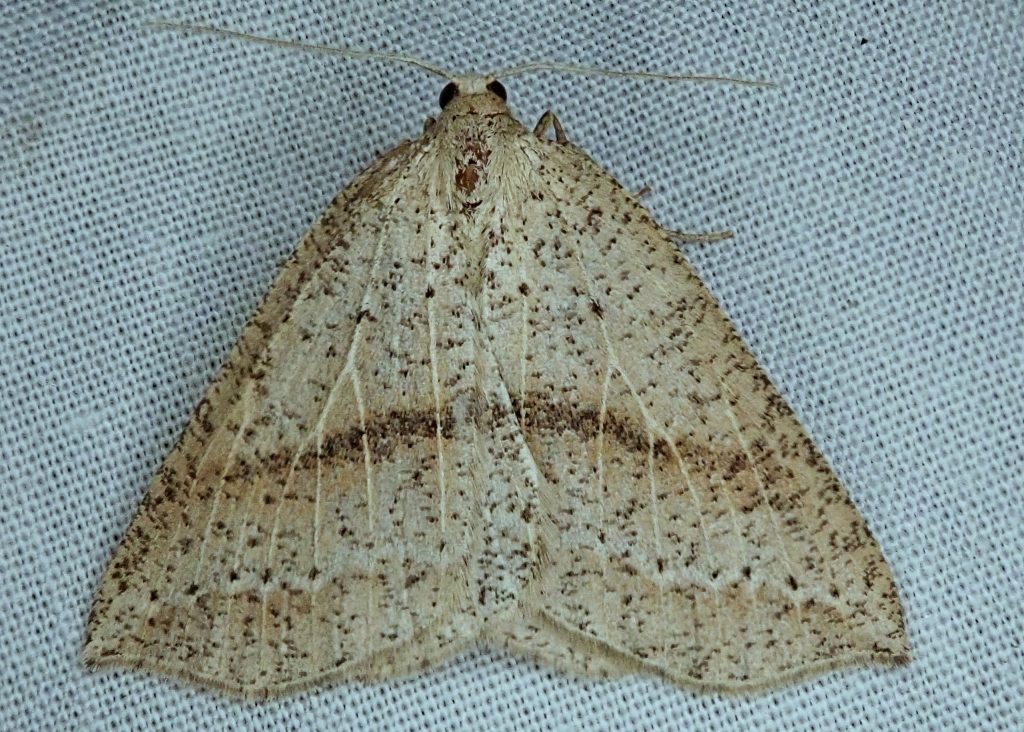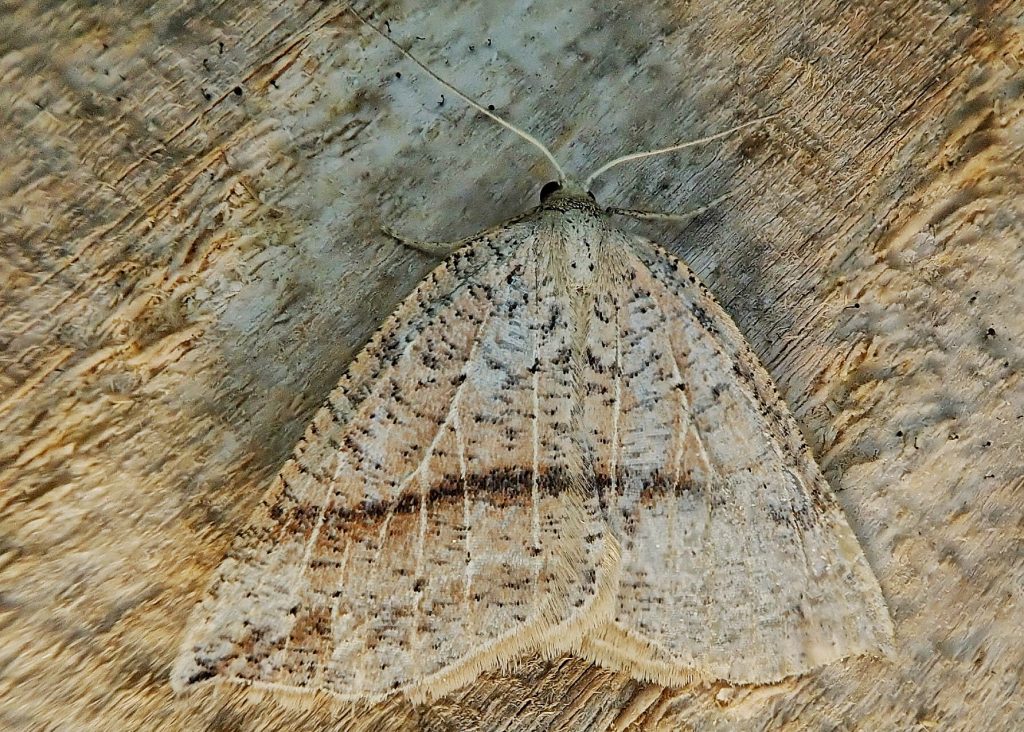
This is a medium sized (FW length 13-15 mm) moth that flies in coniferous forests. It tends to be grayish tan, with lighter colored veins, dark speckles, antemedial and postmedial lines that are shaded around a row of small dots where the veins cross these transverse lines, a somewhat diffuse medial line that doesn’t reach the costa, and a slightly hooked (falcate), pointed forewing tip.
Thallophaga taylorata is most likely to be confused with T. hyperborea. But in that species the medial line does reach the costa, and the wingtips, while pointed, are not falcate.
The larvae feed on ferns, and are particularly fond of swordferns, making this one of the more ubiquitous moths in the wet forests of our region. The larvae spend the winter below ground in diapause as pupa.
Thallophaga taylorata have been recorded as adults from February to September, with peaks in April/May and late June/July, which probably means (Powell and Opler ‘Moths of Western North America’;2009) they are bivoltine (two broods), contrary to widely disseminated information (BugGuide etc) on this species.

http://mothphotographersgroup.msstate.edu/species.php?hodges=6808
https://bugguide.net/node/view/49098
Size- FW length 13-15mm
Habitat- Forested areas with ferns
Range- Primarily west of the Cascades in our region, although some California populations East to the Sierra Nevadas
Eats- Larvae eat ferns, primarily swordferns
Flight Season- February to September

I was not aware of the astounding variety of moths – I suppose partly because they are mostly nocturnal. How is it that you have become such an expert on them?
I am no expert! Just a guy with an interest and some tools. I actually hope to post a blog this evening about how I got into mothing.